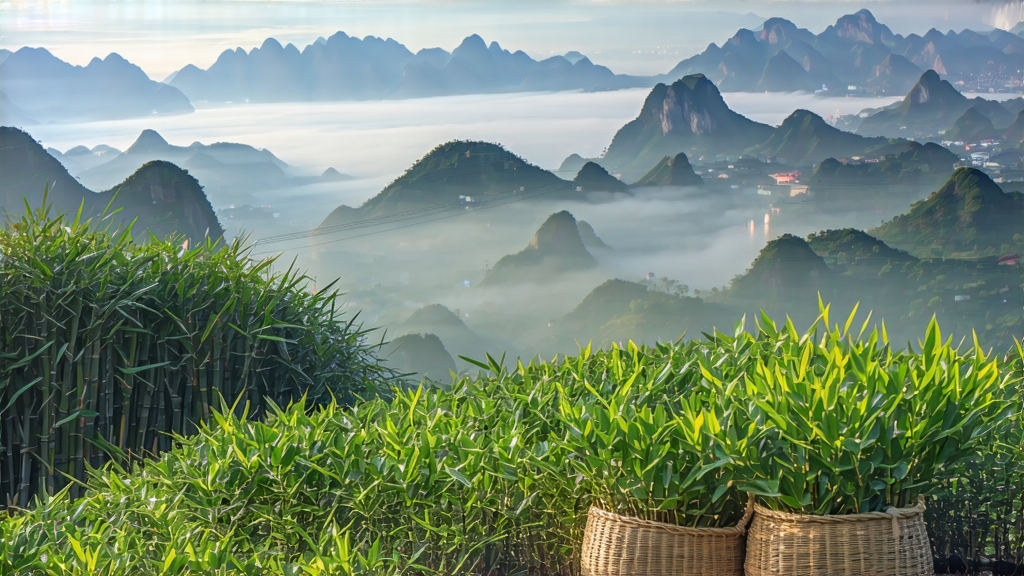
Tucked high in the mist-veiled Dabie Mountains of western Anhui Province, Huoshan Huangya has quietly embodied the alchemy of Chinese tea craft for more than fourteen centuries. While green tea commands global fame and pu-erh fascinates collectors, yellow tea—huang cha—remains the least understood of China’s six great tea families, and within that family Huoshan Huangya is the variety most faithful to the vanished imperial palate. To taste it is to sip the color of late harvest moonlight; to brew it well is to re-enact a ritual once reserved for Tang dynasty court annalists and Song emperors who insisted that “only the bud that holds the mountain’s morning breath may enter the jade cup.”
Historical whispers
The first written record appears in the Shennong Bencao Jing of the Han era, but concrete tribute status was conferred during the Tang (618-907 CE) when tea commissioner Li Jifu shipped “Huoshan Yellow Sprouts” along the Bian River to Chang’an. By the Ming, the county magistrate submitted exactly one jin (500 g) each spring to the Forbidden City, packed in silk-lined bamboo cylinders sealed with lotus leaves. When the Qing court moved to summer residence in Chengde, caravan drivers claimed that the tea’s gentle fermentation survived the bumpy 1,200-kilometer ride better than greener teas, giving yellow tea a logistical advantage that paradoxically hastened its later obscurity: once the empire fell, the elaborate processing steps were deemed too costly and many masters let the craft drift toward extinction. A 1972 state-led restoration project rediscovered three septuagenarian artisans who still remembered the “men-huang” wrapping dance, allowing Huoshan Huangya to re-enter the market just as China reopened to the world.
Micro-terroir
Huoshan county lies at 31° N latitude where the Dabie range funnels humid air from the Yangtze floodplain upward into cool cloud belts. Day-night temperature differentials of 10-12 °C slow bud growth, concentrating amino acids; the soil is a friable granite loam rich in selenium and zinc. Only three villages—Foziling, Jinjiaping and Taiyanghe—possess the original seed-stock gardens of the small-leaf Da Bai cultivar. Picking begins when each bud still clasps an unfurled leaf no longer than 2.5 cm, a stage locals call “parrot beak.” One kilogram of finished tea requires 42,000 such tips, all plucked before Qingming festival when mountain orchids perfume the morning air.
The secret of “sealing yellow”
Yellow tea’s identity rests on a unique oxidation phase that is neither enzymatic like green tea nor microbial like black. Immediately after a 30-second kill-green at 160 °C on a bamboo-roasted wok, the leaves are piled into linen sacks and left in a humid 28 °C room for 40–60 minutes. During this men-huang (“sealing yellow”) step, residual moisture and heat convert chlorophyll into pheophytin while polyphenols gently polymerize, yielding the characteristic primrose hue and mellowing the grassy edge typical of green tea. Masters judge readiness by pressing a fistful of leaves: when the cluster springs back like a sleeping cat and exudes a faint chestnut-sweet aroma, they are spread on low bamboo trays and charcoal-dried at 55 °C for three cycles, each followed by a 30-minute rest to homogenize moisture. The entire choreography spans three dawn-to-dusk days, after which the leaf moisture drops to 5 % and the bud tips turn a lustrous goose-yellow tipped with platinum hairs.
Grades & leaf style
Huoshan Huangya is classified into four ascending grades: Special, First, Second, and Common. Special grade comprises only single buds, their silhouette resembling miniature sparrow tongues dusted with down. When dropped into a glass beaker they stand upright for a full minute—an elegant “dancing bud” phenomenon prized by tea artists. First grade allows one bud to one leaf; Second grade one bud to two leaves; Common grade includes larger leaves yet must still retain 30 % bud content. Regardless of grade, no reddish edges or broken tips are tolerated; the leaf must feel velvety, never brittle.
Water & fire: brewing protocols
To unlock Huoshan Huangya’s layered personality, begin with mountain spring water whose total dissolved solids sit